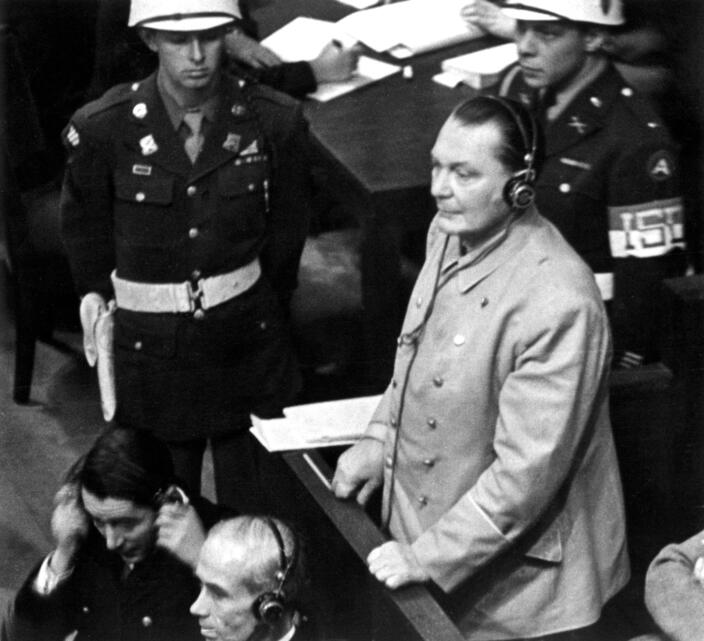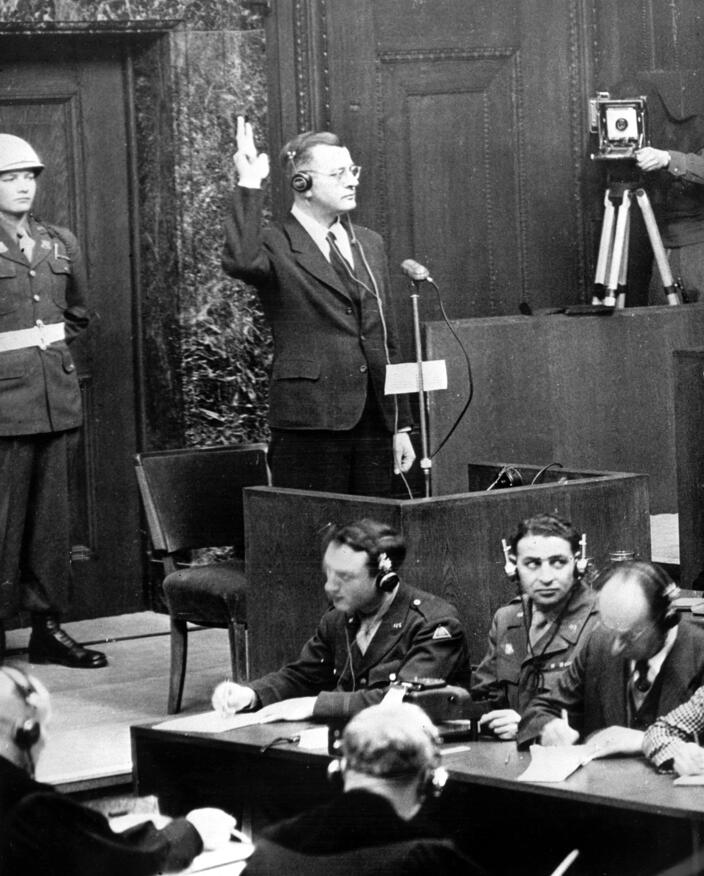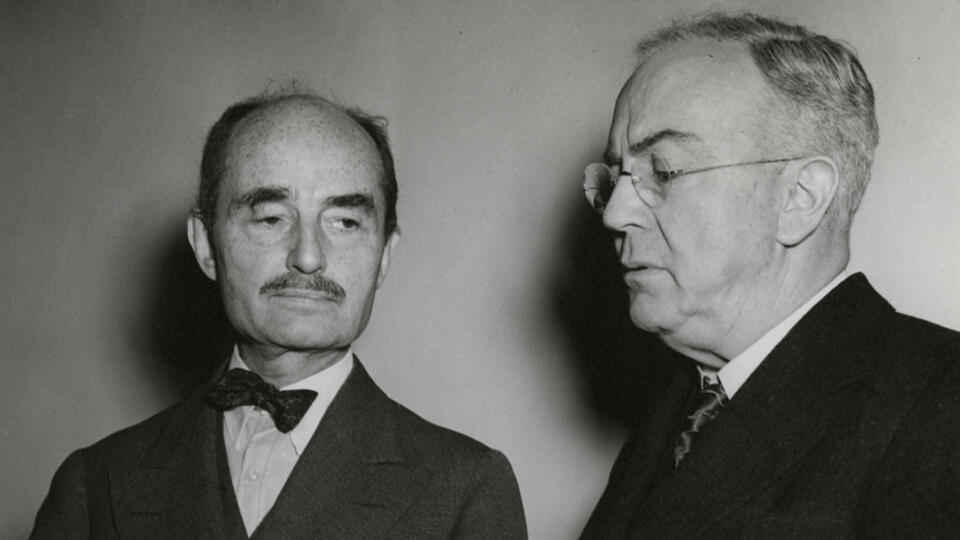Photo: © TASS/Khaldey Evgeniy

Photo: © TASS/Khaldey Evgeniy
On November 20, 1945, the Nuremberg Trials began in Germany. For the next 11 months, the Palace of Justice became a real battlefield. And this is not at all about confronting the prosecution and defense of Nazi criminals. It was the first front of the Cold War – the war between yesterday’s allies. And the leadership of the Third Reich, which found itself in the dock, was well aware of this. They have a real chance to be justified. About how the Nuremberg trials were held, tells program “Unknown History” with Boris Ryzhov on REN TV.
Beginning of the Nuremberg Trials
November 21, 1945, on the second day of the Nuremberg trials, the chairman of the tribunal, the British judge Geoffrey Lawrence, begins to question the defendants. He asks each of them only one question.
“The defendants must answer whether they plead guilty or not. So, Hermann Wilhelm Goering”Lawrence says.
Hermann Göring is the first to speak. Nazi number two, whom journalists called the toad, noticeably lost weight in prison. But he still behaves like a master of the situation. Instead of answering Judge Goering’s simple question, Goering is trying to make a statement. He is immediately turned off the microphone.
“Goering was such a Fuhrer of the dock, he behaved very confidently. He says that the process will pass, they will soon be forgotten. And my, he says, small busts will stand in every house in Germany”– said the deputy director of the Institute of State and Law of the Russian Academy of Sciences, Honored Lawyer of the Russian Federation, writer, historian Alexander Zvyagintsev.

Neither Goering nor the other defendants pleaded guilty that day. The main trial of the 20th century began, which lasted almost a year.
Collection of evidence of crimes
The idea to punish Nazi criminals arose from the leadership of the USSR long before Nuremberg, at the height of the war. For the future tribunal, Soviet experts began to collect evidence. They worked practically at the forefront, marched along with the troops, entered towns and villages that were still burning. The collected material evidence, documents, photos and film materials subsequently played a decisive role in Nuremberg.
“The Germans built a soap factory in Danzig. They made soap from corpses. This factory. Corpses. Soap. Soviet prosecutor Comrade Smirnov presented this terrible material evidence”– is narrated in an excerpt from the documentary film “The Court of Nations”.
Who opposed the Nuremberg trials
Interestingly, the leaders of the allied countries, Churchill and Roosevelt, initially opposed the tribunal. They proposed to execute the Nazi elite without trial or investigation.

“The British said that you only need to calculate the length of the rope and choose a place where to hang the criminals. The same sentiments existed on the other side of the Atlantic. Eisenhower, the commander of the American army, believed that they should all be shot when trying to escape”said the historian.
How was the venue chosen for the tribunal?
But Stalin insisted on the creation of a tribunal. Moreover, the process, in his opinion, was to be held publicly, with the involvement of the press and in accordance with legal norms. As a result, the leader managed to convince the allies. True, some controversy arose over the choice of a place where the Nazis would be tried. The USSR offered to hold a tribunal in Berlin, and the Americans believed that Nuremberg would be a better fit. In this city, the palace of justice with a prison survived, so it turned out to be easier to organize the process there.
“There was an ideal combination of places of detention for the accused, and then for the defendants, their safe transportation to the courtroom. 70 years later. “Our counterintelligence officers were in Nuremberg from the first days of September until November 20. For almost three months they prepared the Nuremberg Tribunal”– Zvyagintsev shared the details.

Who is on the list of accused?
The list of accused included 24 Nazis, including: Hitler’s personal secretary Martin Bormann, Reich Minister of Aviation Hermann Goering, SS Obergruppenführer Rudolf Hess, head of the imperial security headquarters Ernst Kaltenbrunner, Reich Foreign Minister Joachim von Ribbentrop, generals Keitel and Jodl.
Bormann was tried in absentia – he fled Berlin after Hitler’s suicide. Another person involved – Robert Ley – committed suicide in a prison cell before the start of the trial. In addition, charges were dropped against the industrial magnate Gustav Krupp, who was called the Fuhrer of the war economy.
“Krupp, who provided the entire war machine of Nazi Germany with metal, was declared insane, and thus released”– noted Sergey Zasorin, Candidate of Historical Sciences, Director of the International Center for Pedagogical Education of the Moscow State Pedagogical University.
How lawyers confuse witnesses
Thus, 21 high-ranking Nazis appeared before the tribunal. They were judged by eight judges – two from each of the victorious powers. At first, difficulties arose with lawyers – no one wanted to defend such defendants. Nevertheless, in the end, the defenders were found, moreover, experienced, tenacious, and paid for their services at the highest level.

From the very beginning, lawyers tried to present the process as unauthorized – they said that the tribunal was organized by the victorious countries, which allegedly excludes the impartiality of the court. They confused the witnesses, and also tried to shift all responsibility for the crimes onto Hitler.
“These people did not act according to their convictions. Being in the military public service, they carried out the order prescribed from above”the historian emphasized.
The most valuable witness of the USSR
In addition, both the lawyers and the defendants stated that the German attack on the USSR was a necessary measure. Allegedly, Stalin was preparing to strike first, and Hitler simply got ahead of him. In response, Soviet lawyers presented to the court a most valuable witness, whom the Nazi bosses considered dead long ago. This is Field Marshal Friedrich Paulus, former commander of the 6th Army, which capitulated at Stalingrad.
“The propaganda of the Third Reich said that the field marshal died heroically. Hitler arranged a huge ceremony here, put a marshal’s baton in an empty coffin”the writer said.

However, Paulus was alive and actively cooperated with the Soviet authorities. The general was secretly brought to Nuremberg, and his appearance at the trial became a sensation. The field marshal testified and confirmed that Hitler’s goal was to seize and colonize Russian lands.
“September 3, 1940, I began working at the General Staff of the Ground Forces as a quartermaster. And among other documents, I found an unfinished operational development, which dealt with an attack on the Soviet Union”– Paulus testified in court.
Terrible evidence of the crimes of the Nazis
After the testimony of Paulus, the confidence of the defendants and their lawyers noticeably diminished. And when the Soviet representatives began to demonstrate terrible evidence of Nazi atrocities, the line of defense cracked at the seams. Chroniclers recall the sad episode that happened to the American judge John Parker. He could not believe that the SS shot children in concentration camps. But after watching the 45-minute newsreel, Parker fell ill for three days with a nervous breakdown.

“After that, Goering wilted, ceased, in fact, to spar with the prosecution. Our journalists began to comment: “Something he is already some kind of rumpled today. Well, nothing, there will be time – hang out “Zasorin noted.
How Churchill’s Fulton speech affected the tribunal
On March 5, 1946, the day after the end of the indictment part of the trial, the devil’s advocates regained hope. The fact is that on this day Churchill delivered his famous Fulton speech in the United States.
“A shadow has fallen on a stage recently illuminated by the victory of the alliance. No one knows what Soviet Russia and its international communist organization intend to do in the near future, and whether there are any limits to their expansion”Churchill said.
The Fulton speech, where Churchill first used the term “Iron Curtain”, launched the Cold War. The Nuremberg lawyers rejoiced. They hoped to shift the focus from the crimes of the Nazis to a new threat to the West – the USSR.

“They thought that he would drive a wedge between the accusers. But to give credit to the accusers and the judges, they continued their professional work”– noted the honored lawyer of the Russian Federation.
Last word and execution of criminals
On July 26, 1946, the prosecutors began their closing speeches. The last to speak was the chief prosecutor from the USSR, Roman Rudenko.
“In the name of the memory of millions of innocent people killed by a gang of criminals, brought before the court of progressive mankind, in the name of the happiness and peaceful labor of future generations, I call on the court to impose capital punishment on all defendants without exception – the death penalty”– says in an excerpt from the documentary “Court of Nations”.

On August 31, the defendants said their last word. Almost none of them pleaded guilty and did not ask for mercy. Goering even declared that he continued to be loyal to his Fuhrer. As a result, 12 Nazi leaders were sentenced to hang, Bormann – in absentia. Three were acquitted, while the rest received various terms, up to life imprisonment.
The execution of Nazi criminals took place on October 16 in the gym of the Nuremberg prison. The executioner, American Sergeant John Woods, hanged ten people. Goering committed suicide half an hour before the execution. The bodies of the executed were secretly taken to Munich, cremated, and the ashes were scattered over a stream that flowed into the Isar River.
Different versions of historical events, amazing episodes of history, little-known facts and interesting theories – study all this and much more in the Unknown History program with Boris Ryzhov on REN TV.
Source: Ren
Alfred Hart is an accomplished journalist known for his expert analysis and commentary on global affairs. He currently works as a writer at 24 news breaker, where he provides readers with in-depth coverage of the most pressing issues affecting the world today. With a keen insight and a deep understanding of international politics and economics, Alfred’s writing is a must-read for anyone seeking a deeper understanding of the world we live in.
